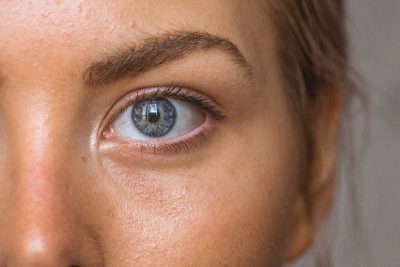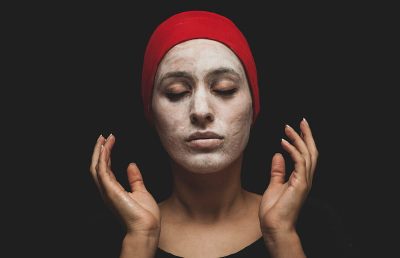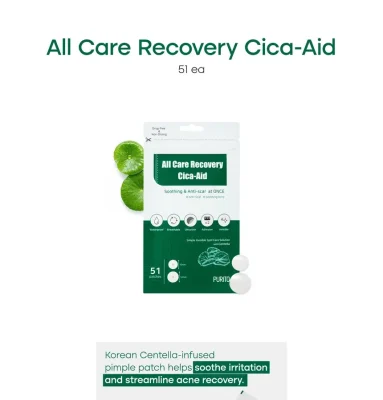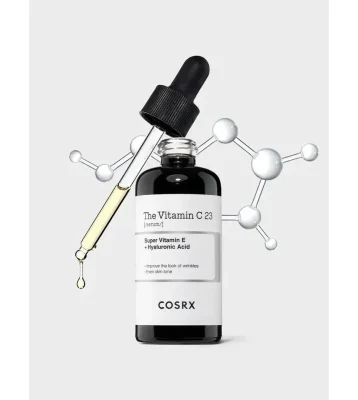Unlocking Your Skin’s Best: The Power of Skincare Layering
Caring for your skin is more than a beauty routine—it’s self-care that impacts your well-being. Your daily skincare is like a gift to your skin, keeping it healthy and preventing future issues and postponing the signs of the skin ageing.
Skincare layering isn’t just about putting products on your face. It’s a thoughtful process of making sure each product does its best for your skin. If you don’t use your skin care products not in correct order or use the wrong products together, it can waste time and money, or even harm your skin.
In this guide, we’ll explore the basics of layering skin care products. It’s a bit like following a recipe; each product has a role, and when they come together in the right order, the result is beautiful. Think of it as the artistry of Korean skincare layering—an exciting and healing practice for your skin.
Whether you’re new to skincare or looking to improve, understanding how to layer your products can make a big difference. It’s not just about having healthier skin; it’s about bringing out the best in your skin’s natural beauty.
Join us as we uncover the layers and discover the magic of layering skin care products —a ritual that reveals the true glow of your skin.
Identifying Your Skin Type and Concerns
Understanding Different Skin Types (e.g., Oily, Dry, Combination)
Before diving into the world of skincare, it’s crucial to identify your skin type. This step forms the foundation of your routine, helping you choose products that cater to your skin’s specific needs. Here’s a quick breakdown:
- Oily Skin: Characterized by excess oil production, often leading to a shiny complexion and enlarged pores. Look for products that balance oil without stripping the skin.
- Dry Skin: If your skin feels tight, flaky, or lacks moisture, prioritize hydrating products. Look for moisturizers with ingredients like hyaluronic acid, glycerin, and ceramides to nourish and lock in moisture.
- Combination Skin: A mix of oily and dry areas, requiring a balanced approach. Choose products that address both oily and dry zones.
Addressing Skin Concerns
Identifying specific skin concerns allows you to target problem areas effectively. Common concerns include:
- Acne: Characterized by pimples, blackheads, and whiteheads. Choose products with ingredients like salicylic acid or benzoyl peroxide, and/or fix your skin barrier by Panthenol (B5), ceramides, squalene.
- Aging: Fine lines, wrinkles, and loss of elasticity. Look for products with retinol, vitamin C, or peptides.
- Hyperpigmentation: Dark spots or uneven skin tone. Opt for products with ingredients like niacinamide or alpha arbutin.
- Sensitive Skin: Easily irritated or prone to redness. Choose products labeled “gentle” or “for sensitive skin.” Avoid harsh ingredients such as fragrances and opt for hypoallergenic formulations.

Understanding both your skin type and concerns, including dryness and sensitivity, sets the stage for building a personalized routine that addresses your skin’s unique characteristics and challenges. It is important to understand the concerns of finding skincare with proper active ingredients. Thus, it is also important to master layering active ingredients skincare – it is not only about thin to thick, it is also about compatibility and synergy.
Building Your Skincare Routine and Skincare Layering Order
Cleansing
Cleansing is your Step 0.
Before delving into your skincare routine, it’s essential to start with a clean canvas. Cleansing not only removes dirt, oil, and makeup but also primes your skin to absorb the subsequent products effectively. Think of it as clearing the slate for your skincare masterpiece.
However, please also note that cleansing is also a big topic and different skin type needs a different approach to skin cleansing.
Different skin types have different cleansing needs. For oily skin, opt for a gentle foaming cleanser to control excess oil. Dry skin benefits from creamy or hydrating cleansers to prevent further moisture loss. If you have combination skin, choose a cleanser that balances without over-drying any specific areas.
For oily skin, it is better to choose cleansers with salicylic acid (but not over-using them, even with acne-prone skin).

What is often common for any skin type and skin concern is that AM and PM face wash are different. PM skincare routine shall include double cleansing. People often ask – should you double cleanse twice a day? No, you should not because over-cleansing, like over-exfoliation, can compromise the skin barrier. And AM face wash is usually either just lukewarm water or includes a solution that fits your skin type (read here about Beginner Basic Skincare Routine rules)
Toners in layering skincare products
So, you’ve cleansed your canvas, and here’s the next act in our skincare symphony: introducing the toner – the first step in layering skincare products.
Why, you ask? Well, let’s take a stroll through the skincare garden and uncover the petals of wisdom:
Balancing Act with Toners:
After the cleansing overture, your skin’s pH levels might be doing a little dance. Enter stage left: the toner. It’s not just a follow-up; it’s the opening act that brings back harmony. Toners are like the maestros, restoring balance and creating an environment where your skin becomes a sponge for the goodness that follows. A balanced pH isn’t just a skincare buzzword; it’s the key to overall skin health, warding off issues like dryness and excess oiliness. Oh, and here’s a little pro tip: skincare loves a damp stage, except for the drama queen, retinol. It prefers a dry spotlight to avoid irritation.
Layering Wisdom:
Ever heard of the skincare rule of thumb? It’s like creating a skincare masterpiece, layer by layer. From thinnest to thickest, water-based before oil-based – that’s the rhythm. Toners, the sleek dancers in this routine, are usually on the thinner side. But, be ready for surprises; some toners might feel a bit thicker, even flaunting an oily touch. Fear not, dear reader! Their choreography is designed to prep your skin for the grand performance. So, even if your toner feels a bit more luxurious than the serum that follows, let it be the first in skincare layering.
Selecting Toners Based on Skin Needs Toners come in various formulations to address specific skin needs. For dry or sensitive skin, choose a hydrating or soothing toner with ingredients like Centella Asiatica, aloe vera, and mugwort. In Korean skincare, these ones are very popular. It is also interesting that in Korean skincare layering, it is recommended to add several layers of toner for better hydration, either layer one toner or several ones one by one.
Oily, acne-prone skin, skin with blackheads benefits from toners containing ingredients like salicylic acid to control excess oil and dissolve oil in the pores. Pick a toner that complements your skin type to optimize the benefits of this crucial step in your routine.
Read more about face toners
Targeted Treatments
Follow the correct sequence when layering skincare spot treatments. It’s advisable to use them after cleansing and toning, but prior to applying serums and creams. The efficacy of active ingredients is optimized when applied to clean skin. Avoid applying spot treatments over thicker creams or oils, as this may hinder effective penetration.
If you’re using spot (pimple) patches, then apply them after a toner if it is on watery, not oily side. It is helpful when patches have active ingredients (usually they don’t) – these ones with centella asiatica not only protect but also calm the skin.

Layering Actives in Skincare: Serum
Serum application is the next step in skincare layering. But what if you have several serums? Layering active ingredients in skincare is also a subject of compatibility with skincare ingredients. What are skincare ingredients not to mix?
Recognizing Active Ingredients, Serums are potent formulations designed to target specific skin concerns. To make the most of these concentrated products, it’s crucial to recognize active ingredients. Picture hyaluronic acid as the hydration maestro, vitamin C as the brightening virtuoso, retinol as the anti-acne and anti-aging sensation, and niacinamide as the harmonious blend of brightness and antioxidant power. Understanding your skin concerns is like choosing the perfect playlist—pick serums with ingredients that resonate with your skin’s needs.
Layering Serums for Specific Concerns Serums part is often the most difficult in the layering skincare actives topic. As sometimes we use several serums, and it is difficult to choose which one to start with.
- Prioritize Based on Concerns: If your skincare playlist includes multiple serums, layer them strategically. Start with the one that hones in on your primary concern—whether it’s anti-aging or hydration. It’s like giving the lead role to the serum that steals the show.
- Thin to Thick, Smart, and Quick: Continue following the rhythm of thinnest to thickest consistency. Begin with the lighter serums, allowing each to dance onto your skin before the grand entrance of the richer ones. This ensures that every serum has its moment, contributing to your skin’s overall well-being.
- Navigating Vitamin C’s Quirks: Ah, the enigmatic vitamin C serum—it deserves its own spotlight – it promotes collagen production. If it’s part of your morning routine (as recommended), start with it after toner, as vitamin C can sometimes be a bit finicky with skin penetration. But wait, some vitamin C serums are oil-based. In that case, let the supporting actors, like Centella Asiatica or niacinamide, take the stage first. Then, cue in your vitamin C serum for a harmonious performance. While vitamin C might be irritating, it can prolong skin youth and help your sunscreen protect your skin.

Besides, it’s important not to forget to apply the serums on damp skin for better penetration.
However, there are exceptions as well.
If you use retinol as it is promoting cell turnover and collagen production (while layering skincare at night – as retinol is recommended for PM skincare routine), it is better not to combine it with vitamin C, and it is important that your skin dries before you apply your retinol solution (a serum or a cream – the rule persists – apply retinol when the skin is dried after cleansing or layering skincare before it).
I’ve started incorporating retinal in my routine and put critical information about it in the Beauty of Joseon Revive Eye Serum: Ginseng + Retinal Review
Eye Care
Eye care is the next step in layering skincare.
Incorporating Eye Solutions The skin around the eyes is delicate and prone to signs of aging. Incorporating an eye cream into your routine might help to nourish and protect this sensitive area.
There is also dermatologists’ opinion that eye creams are overpriced moisturizers. Because they are usually no different from usual moisturizers. So, if you don’t have any concerns about your under-eye area, apply your normal moisturizer there. Also, beware – some eye creams can cause milia in some people. However, if we’re talking about retinol, you either use retinol eye solution or avoid this sensitive area (or apply it on top of a protective layer – as directed by your dermatologist).
Addressing Specific Eye Area Needs Different eye concerns require targeted solutions. If you’re dealing with dark circles, look for eye creams with brightening agents like vitamin K or niacinamide. For fine lines and wrinkles, opt for eye products containing retinol, or choose an eye cream with ingredients like peptides or caffeine to reduce puffiness and minimize the appearance of fine lines. Tailor your eye care routine to address the unique needs of this sensitive and expressive area.
Moisturizing
Moisturizers are put on top of our previous layers of skincare.
Moisturizing is a crucial step for all skin types, even oily and acne-prone ones, as excessive oiliness can also be caused by dehydrated skin, and acne might be caused by a compromised skin barrier, whick moisturiser helps to fix.
Moisturizers lock in moisture, creating a protective barrier against environmental stressors. This step ensures your skin stays supple, soft, and better equipped to fend off signs of aging and external irritants. Make hydration a non-negotiable key step in your daily skincare routine.
Choose a moisturizer that matches your skin type. For oily skin, opt for a lightweight, oil-free formula. Dry skin benefits from richer, creamier moisturizers, while combination skin may require a balanced approach.
Face Oils
In the grand tapestry of skincare, oils stand as revered elixirs, offering a multitude of benefits that can transform your routine.
Essential oils, extracted from plants, carry potent aromatic compounds and are often used for their therapeutic properties.
Carrier oils, derived from seeds or nuts, are milder and serve as a base to dilute essential oils while providing nourishment to the skin.
Usually, facial oil solutions include one or more carrier face oils, and essential oils might dissolve in them.
Integrate oils strategically into your skincare layering routine. Consider applying them after moisturizer to lock in moisture or as a final step to seal in the goodness. But if your moisturizer is a very thick cream, then you might try applying oil before it.
Despite common misconceptions, many facial oils are non-comedogenic and can be beneficial for acne-prone skin. Look for oils like tea tree or squalane, which are known for their acne-fighting properties.
Some oils, such as rosehip or carrot seed oil, harbor natural sun-protective elements. While not a substitute for sunscreen, they can enhance your skin’s defense against UV damage. But they are not a replacement for sunscreen.
Sunscreen Application
Sunscreen is the unsung hero of any skincare routine. Daily exposure to the sun’s harmful UV rays contributes to premature aging and increases the risk of skin cancer. By applying sunscreen every day, you create a shield against these damaging effects, maintaining the health and youthfulness of your skin. Make it a non-negotiable step, rain or shine (because rays are going through the clouds as well).
The Sun Protection Factor (SPF) indicates how well a sunscreen protects against UVB rays. Choose an SPF based on your skin type and daily activities. For everyday use, an SPF 30 is generally sufficient, especially if you spend your time indoors, but if you spend extended periods outdoors, opt for SPF 50 or higher. Don’t forget to reapply throughout the day, especially after sweating or swimming.
What sunscreen to use? Read my Beauty of Joseon Sunscreen Review
Adjusting Your Routine for Newcomers
Gradual Introduction of Products For those new to skincare, introducing products gradually is crucial. Start with the basics—cleanser, toner, moisturizer, and sunscreen—and gradually incorporate additional products, starting with one serum, then adding more, if needed, to address more concerns. This allows your skin to acclimate, reducing the risk of irritation or adverse reactions.
Monitoring Skin Reactions and Making Adjustments: Pay close attention to how your skin responds to each product. If you notice redness, itching, or breakouts, it’s a sign that a product might not be suitable. Be patient, and make adjustments as needed. Skincare is a personal journey, and finding the right products for your skin may require some experimentation.
Common Mistakes to Avoid
Overloading the Skin with Too Many Products More is not always better in skincare. Overloading your skin with numerous products can lead to irritation, clogged pores, or even worsen existing issues. Stick to a well-balanced routine tailored to your needs rather than incorporating every trending product.
Neglecting Sunscreen One of the most common mistakes is neglecting daily sunscreen use. Regardless of your skincare concerns, sunscreen is non-negotiable. Consistent sun protection is a cornerstone of preventing premature aging and maintaining healthy skin.
Mixing Incompatible Ingredients Not all skincare ingredients play well together. Avoid combining ingredients that may cancel each other out or, worse, cause irritation. Research potential interactions or consult with a skincare professional to ensure compatibility.
Conclusion
A well-structured skincare routine is the foundation of healthy, vibrant skin. Each step plays a crucial role in maintaining balance, addressing concerns, and promoting long-term skin health. Achieving healthy skin is a journey that requires consistency and patience. Results may not be immediate, but with a well-crafted routine tailored to your needs and diligent care, you’ll see improvements over time. Embrace the process, and your skin will thank you for the love and attention you give it. Want to buy something for your new or revised skincare routine with an extra discount?
Use the links and codes to get an extra discount:
1) IHerb: https://www.iherb.com?rcode=NAT0553 or just a code NAT0553
2) LookFantastic: https://www.lookfantastic.com/referrals.list?applyCode=NNMU-R4 or just a code on checkout NNMU-R4
3) YesStyle – use this Rewards Code VZBZKB or follow the link https://www.yesstyle.com/en/home.html?rco=VZBZKB&utm_term=VZBZKB&utm_medium=Rewards&utm_source=dynamic&mcg=influencer
4) StyleVana http://rwrd.io/lj8xhzt?c